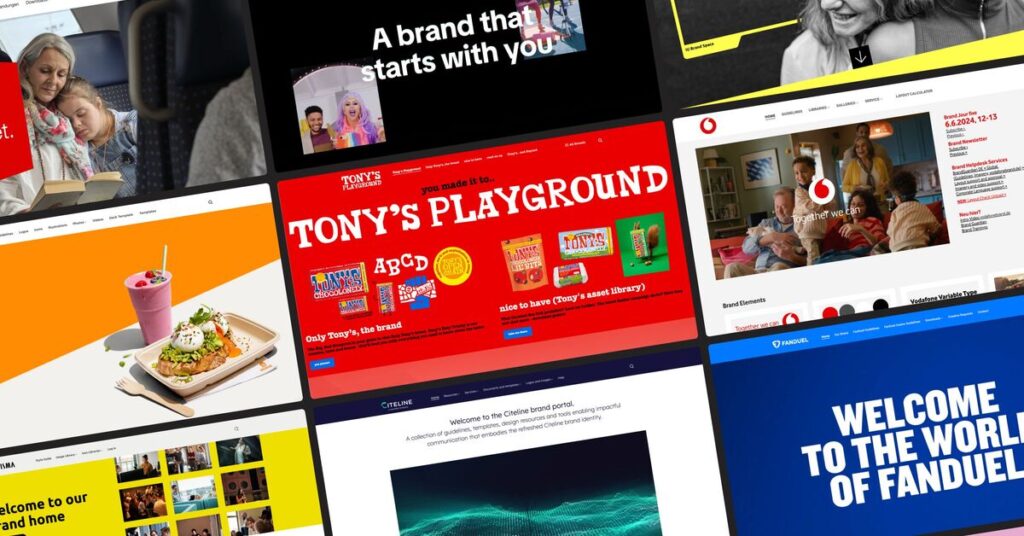In a world where traditional and digital media coexist, a new form of storytelling has emerged – Transmedia Storytelling. This innovative technique allows storytellers to captivate audiences across multiple platforms, creating immersive and engaging experiences. Join us as we dive into the fascinating world of transmedia storytelling and explore its benefits and various forms.
What is Transmedia Storytelling?
Transmedia storytelling refers to telling a story across multiple platforms and formats, with each element making a unique contribution to a viewer’s understanding of the story world. It moves beyond just adapting content for different media channels, creating a coordinated experience that encourages consumers to engage more deeply.
The Benefits of Transmedia Storytelling
Transmedia storytelling is a narrative technique that allows creators to tell a story across multiple platforms and formats, such as books, films, TV shows, video games, social media, and more. This approach offers numerous advantages for both audiences and creators.
For audiences, transmedia storytelling provides a more immersive and engaging experience. Instead of consuming a story in a single medium, they can follow the story across various platforms and get a deeper understanding of the narrative and its characters. Moreover, transmedia storytelling allows for unique story elements that are specific to each platform, making the overall experience more exciting and interactive.
For creators, transmedia storytelling opens up new opportunities to reach a wider and more diverse audience. By leveraging the strengths of each platform, creators can tailor their content to different audiences and engage them in different ways. They can also experiment with different formats and storylines, testing what works best and refining their approach over time.
Finally, transmedia storytelling allows branded content to connect more meaningfully across channels. Instead of simply promoting a product or service through traditional advertising, transmedia storytelling allows brands to integrate their marketing message into a compelling story that resonates with audiences. This approach can lead to stronger brand engagement and loyalty, as well as increased sales and revenue.
Different Types of Transmedia Storytelling
Transmedia storytelling can take many forms across different media:
Animation
Animation, especially 3D and CGI, can bring fictional worlds to vivid life. Bright, colorful styles appeal to children.
Interactive Websites
Websites allow users to actively participate in stories through games, activities, and virtual reality.
Social Media Campaigns
Short videos and images on platforms like Instagram and TikTok enable user-generated content and influencer marketing.
Practical Tips for Successful Transmedia Marketing
Let’s take a closer look at how you can incorporate transmedia storytelling into your marketing plan:
- Focus on Clarity: Define your brand’s purpose and core attributes early in the narrative. This helps establish a connection with your target audience.
- Character Development: Consider the characters needed to convey your brand’s message. They should complement your brand’s theme and create a personal attachment for your audience.
- Create Franchises: Instead of one-off campaigns, focus on developing an extended narrative around your brand. This provides opportunities for an engaging and continuous transmedia story.
- Involve Your Audience: Bring your consumers into the story. This adds depth, perspective, and resonance with your audience.
- Resonate with Your Audience: Understand what will resonate with your audience and tailor your content accordingly. Don’t overestimate your brand’s influence; instead, create a memorable and effective experience for your audience.
- Leverage User Behavior: Consider how your target audience uses various tools and platforms. This insight helps you disseminate content effectively.
- Maintain Continuity and Depth: Ensure continuity in the story across different media. This creates a coherent narrative that’s easy for all to understand and offers deeper engagement.
Brand Example of Transmedia Branding
A successful instance of transmedia storytelling is the collaborative project between Intel and Toshiba. Their objective was dual: to engage with consumers and to market the Toshiba Ultrabook. They accomplished this by producing an online mini-series of six webisodes titled “The Beauty Inside”.
The central character was Alex, a young individual who woke up each day in a different body, dealing with typical life challenges such as job hunting, falling in love, and maintaining friendships. Alex utilized a Toshiba Protégé, powered by Intel, to narrate his experiences through daily video logs.
The triumph for Intel and Toshiba lay in their ability to engage with users via social media: In this narrative, viewers could interact with Alex via his Facebook page and contribute by providing a new face for the character each day. Subsequently, each episode was made available on YouTube.
Upon the conclusion of the campaign, which spanned over six weeks, the webisodes had become a sensation, amassing 60 million views globally and receiving a 97% approval rating on YouTube. Moreover, throughout the mini-series, it was possible to showcase 100 distinct faces for Alex.
Challenges of Transmedia Storytelling
While transmedia storytelling offers tremendous potential, it comes with its set of challenges. Some of these include:
- Maintaining Consistency: Ensuring consistency across characters, settings, and plot points in different media can be challenging due to limitations and conventions.
- Balancing the Story: Each medium has its strengths and weaknesses. Balancing the story to leverage these strengths while maintaining narrative coherence is crucial.
- Audience Fragmentation: Audiences change as platforms evolve. It’s challenging to ensure that your audience stays engaged and follows the story across different platforms.
- Costs: Transmedia storytelling can be expensive, as it involves multiple platforms. Smaller creators or companies may need to limit the number of platforms to manage costs.
- Intellectual Property Issues: Licensing and copyright can pose challenges. It’s essential to be well-informed about these issues before embarking on a transmedia storytelling journey.
Demystifying Transmedia Storytelling
Transmedia storytelling may sound like a complex term, but in reality, it’s all about spreading your story across various traditional and digital platforms. The word “trans” as a prefix means “across,” and “media” encompasses the platforms we use to convey and consume stories. Let’s dive into the fascinating world of transmedia storytelling and explore its significance.
Why should brands care about transmedia storytelling?
Stand out in today’s world by creating branded content that is relevant and engaging. Transmedia storytelling weaves your brand’s message across different platforms, sparking meaningful conversations with your audience. Deliver your message in a way that resonates with your target market and increases engagement with your brand.
Transmedia storytelling isn’t about repurposing the same content across different channels; that’s a cross-media approach. It’s about tailoring your story for each medium, creating a coordinated experience that draws consumers deeper into your brand narrative. Each platform plays a specialized role, forming a holistic story world.
Henry Jenkins, a communication expert, describes transmedia storytelling as a process where key story elements are dispersed across multiple channels to create a coordinated entertainment experience. Think of The Matrix, a quintessential example where the story unfolds through live-action films, animated shorts, comic books, and video games. To grasp the full Matrix universe, you need to experience them all – a testament to the power of transmedia storytelling as an immersive experience.
Transmedia storytelling isn’t limited to entertainment; it’s also a powerful tool for brands. The Blair Witch Project used it in its promotional campaign, creating televised “documentaries” and on-the-street personnel to distribute missing-person flyers for the fictional characters who disappeared in the film. Brands across various industries have adopted this technique, fueled by digital and social media’s ability to connect with diverse audiences worldwide.
The Future of Transmedia
Looking forward, transmedia storytelling presents an exciting potential for creating truly immersive branded content as part of a comprehensive brand strategy. This powerful technique crafts engaging and immersive narratives across a variety of platforms. It’s been successfully applied in renowned franchises like Star Wars, Marvel Cinematic Universe, and Harry Potter. While it presents challenges, it offers unique opportunities for brands to connect with their audience in meaningful ways. As transmedia storytelling continues to evolve, it provides marketers with exciting avenues for storytelling, allowing them to tap into the largely untapped trend and potentially reap phenomenal rewards. So, don’t be afraid to explore the world of transmedia storytelling and create a universe where your brand story lives and your consumers inhabit.



